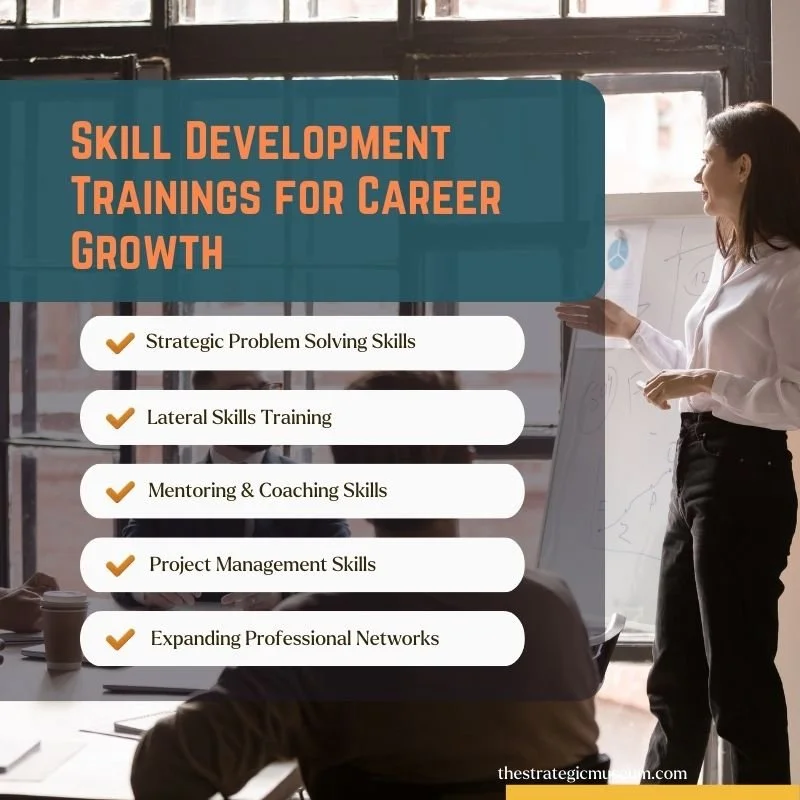Empowering Growth and Career Development in Museum Professionals
The exodus of talent from the museum sector highlights the urgent need for revitalizing organizational culture and prioritizing employee growth and development. We all know this alarming trend stems from various factors, including low pay, burnout, limited growth opportunities, and ineffective management. While addressing issues like pay and upward growth opportunities requires systemic-level attention within the field, museum managers and staff can autonomously undertake actions to develop skills and foster a fulfilling work environment.
How supervisors can assist:
By nurturing an environment that fosters skill development, innovation, and collaboration, museums can harness the collective expertise of their teams to retain talent and facilitate continuous growth and advancement within the sector. Effective leadership, open communication, and a commitment to innovation are vital in retaining talent and building a strong organizational culture.
Establishing a safe space where individuals are encouraged to make mistakes fosters a culture of learning and resilience. Embracing failures as valuable learning experiences encourages risk-taking and innovation, ultimately propelling the team towards greater success. Nurturing an ethos of innovation within the team fosters a culture of experimentation and creativity, facilitating ongoing refinement and adaptation to evolving circumstances.
Supervisors can also provide invaluable support through tailored skill development and training programs, empowering team members to tackle challenges and seize growth opportunities.
Problem-solving strategies:
Building a dynamic team culture within the museum also entails recognizing and harnessing the diverse problem-solving approaches of team members. Organizational psychology research shows that each individual inherently possesses a unique style of creative problem solving and execution of tasks. Some may excel at generating innovative ideas but struggle with execution, while others adeptly implement solutions but falter in refining details or structuring plans.
These varied approaches significantly impact employees' satisfaction levels, particularly when tasked with multiple projects and outcomes that they are not naturally equipped for or trained in. Leadership's grasp of each team member's skills is paramount, enabling them to provide tailored support. This may involve assigning a project to a group based on complementary skill sets, fostering environments where natural strengths flourish, and guiding improvement in areas requiring development.
Lateral skill development:
Enhancing team members' capabilities involves lateral skill development. For instance, a curatorial assistant could delve into understanding the exhibition design process, broadening their skill set and potentially contributing more effectively to museum projects. Additionally, individuals can reshape their current roles to enhance efficiency and scalability, maximizing their impact within the organization.
Mentoring skills:
Nurturing mentoring skills cultivates a supportive learning environment within the team. By facilitating knowledge exchange and skill transfer, team members can collectively elevate their proficiency levels. Embracing digital skills is another imperative facet in the modern museum landscape, enabling professionals to adapt to evolving technological demands and better serve museum goals.
Project management skills:
Project management skills stand as essential and transferable competencies applicable across diverse roles and industries. Equipping team members with these skills enhances their capacity to navigate complex projects efficiently and deliver results effectively.
Expanding employee influence:
Expanding one's professional network fosters collaboration and knowledge-sharing, enriching the collective expertise within the museum ecosystem. Partnering with external organizations provides invaluable opportunities for learning, mentorship, and volunteering, thereby enriching individual capabilities and bolstering credibility within the museum sector. By extending influence beyond organizational boundaries, professionals can tap into diverse resources and perspectives, enriching their contributions within their respective institutions.
While managers and supervisors hold a pivotal role in creating an environment conducive to skill enhancement and personal growth, it's essential to recognize that every member of the museum staff plays a part in their own development journey. I invite your thoughts and opinions on how we can further cultivate a culture of continuous learning and skill-building within our museum community.

